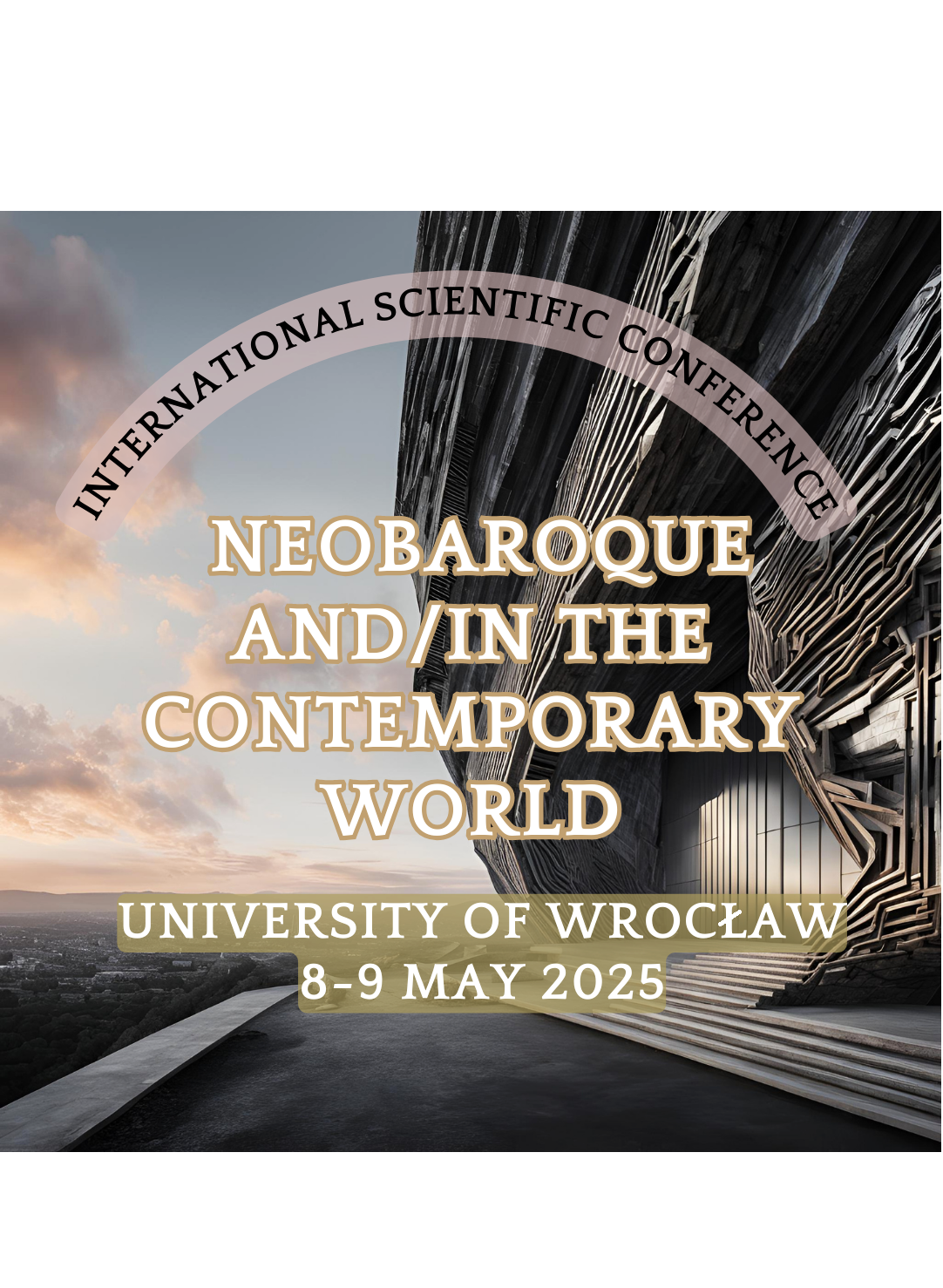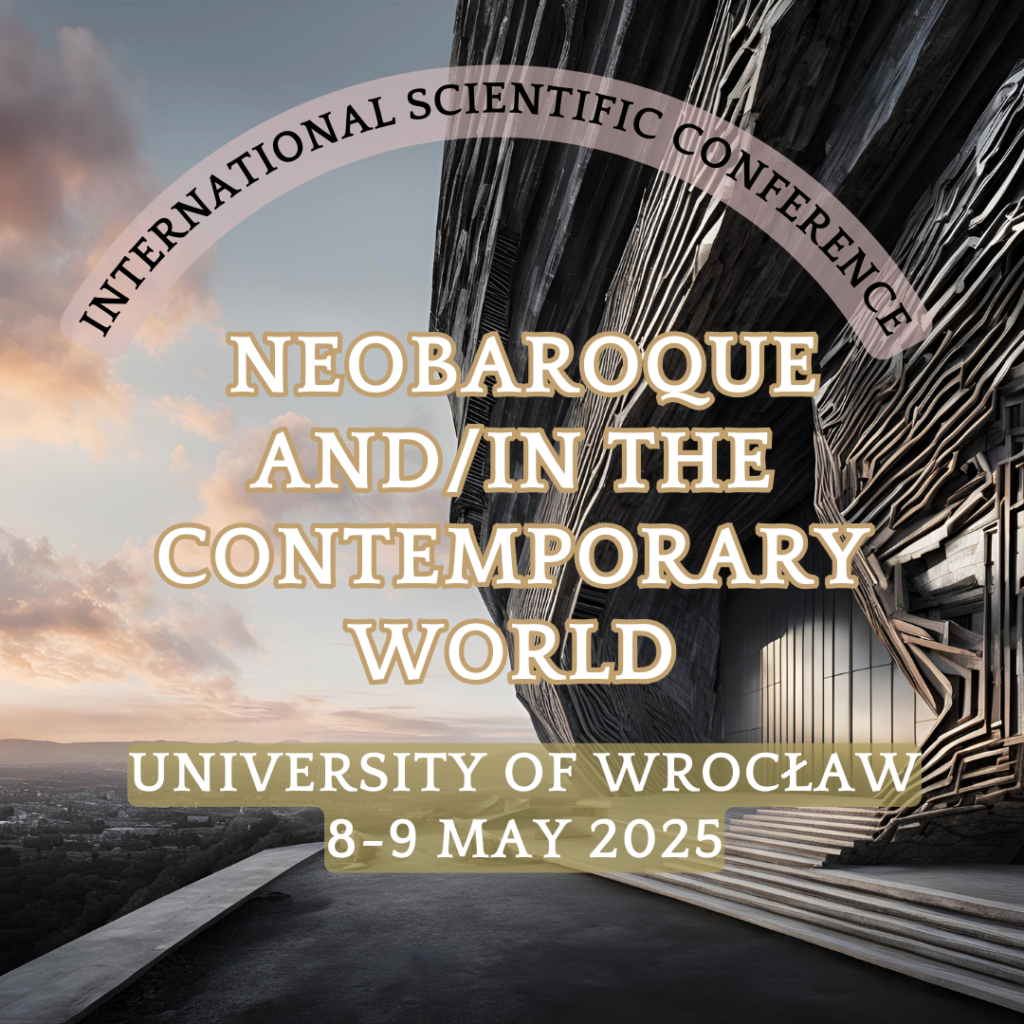



Famously associated with the strange attraction of the irregularly shaped pearl, the term ‘baroque’ eludes precise definitions and keeps engendering conflicting emotions in contemporary cultural discourses. The concept of the neobaroque not only inherits the polycentric semantics of baroque but poses additional problems due to the multiplicity of senses attached to the prefix neo. These circumstances find reflection in a concern about the variety of relationship between history, aesthetics and politics in available conceptualisations of the return of the baroque in (European, Western, global) Modernity, multiple shapes of the New World baroque, and variously conceived neobaroques only recently discovered and rehabilitated or presently arising as ways of interpreting possible futures of our planet. This staggering richness of ideas promises stimulating and very productive discussions.
In asking what use is neobaroque today we seek to encourage discussions of possible recent reworkings of the concept of the neobaroque and to tease out its intersections with the theoretical perspectives that captivate contemporary mind, such as Anthropocene, Affective Turn, Non-human Turn, and Forensic Turn. We adopt a very broad definition of the neobaroque as a sensibility, political aesthetics, episteme and research paradigm, and recognize its transhistorical and transgeographical character.
We consider it very inspiring that within its multi-dimensional methodological framework, the neobaroque, understood as both political aesthetics and a research perspective, invites interdisciplinary tools of inquiry that derive from such fields as history, theory and anthropology of literature, comparative studies, rhetoric and aesthetics, art history, media and film studies, theory and history of architecture, historiography, history of science, and musicology. Variously conceived neobaroques also invite a reflection on the extent to which they embody a ‘minor’ or ‘major’ strategy as conceptualized by Deleuze and Guattari. The neobaroque strategy of becoming minor evinces a hybrid, poliphonic, politically engaged, transmodal and transdisciplinary poetics that grants voice to the ‘baroque reason’ of the Other, a concept introduced by Christine Buci-Glucksman. The neobaroque minor expression is in particular attuned to the voices and silences of women, children, LGBTQ+ communities, those subject to racial, gender and class discrimination, animals and things, whereas the major strategy tends to conserve a status quo and is often aligned with the spectacle as a means of legitimizing power.
We believe that the history of the neobaroque(s) as a conception and the forms in which it has found its expression as well as the question of its contemporary relevance provide an excellent point of departure for the examination of the range of topics concerned both with the past and the future of the globality to which the historical baroque gave rise.
We invite papers and presentations that address the continuous relevance of neobaroque sensibility in the contemporary world. Multiple perspectives of examining the subject are welcome, including interdisciplinary and transdisciplinary approaches. We encourage submissions in literary studies, cultural and political studies as well as media studies, arts and architecture.
International Conference
Neobaroque and/in the Contemporary World
University of Wrocław, Poland
8-9 May 2025
Dedicated to the memory of Professor Florian Śmieja (1925-2019)
The welcome topics are related but not limited to the following fields of research:
- Discovering multiple (neo)baroques
- Transmodality of neobaroque texts
- Neobaroque global spectacle of power, political turmoil and social chaos
- The neobaroque and decoloniality
- The resurge of the (neo)baroque sensibility and epistemology in the 21st c. and its intersections with the Anthropocene discourse
- Neobaroque and the Affective Turn
- Ecology, climate change and neobaroque affect
- The vulnerability of the neobaroque tremulous body
- Neobaroque body artifice, camp, and the body in transition
- Contemporary forms of Wunder- and Kunstkammer
- Wunderkammer and (neo)baroque production of knowledge
- Neobaroque Kunstkammer, automatons and the Artificial Intelligence discourse
- Neobaroque poetics and sensibility in/of computer games
- Smart city and the neobaroque
- Neobaroque scripted urban landscapes and gardens
- Neobaroque aesthetics and tourist industry
- Neobaroque (in) media and film
- Neobaroque music
- Neobaroque world of plastic and synthetic materials abundance
- Law, neobaroque culture of images and forensic imagination
- The persistence of baroque aesthetics in Hispanophone literature and culture


